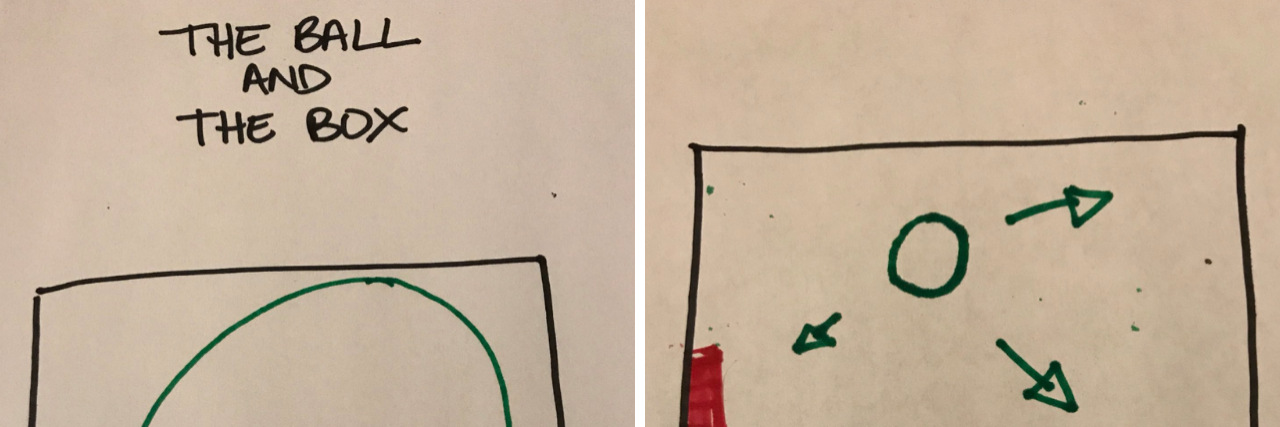Grief is a tricky thing to explain. Everyone grieves differently, and there’s certainly no timeline that lets you know how you’re supposed to feel. To show this, Twitter user Lauren Herschel shared an analogy that explains how grief changes over time and why it can still bubble up randomly. Her analogy — and the pictures she drew to explain it — have been retweeted over 12,000 times.
Herschel drew a box (square) with a ball (circle) inside. On the left side of box is a red “button.” When the grief is new, she explained, the ball takes up most of the box and is hitting the button, which represents pain, over and over again. The pain is fairly constant.
“In the beginning, the ball is huge,” Herschel said in a tweet. “You can’t move the box without the ball hitting the pain button. It rattles around on its own in there and hits the button over and over. You can’t control it — it just keeps hurting. Sometimes it seems unrelenting.”
After what has been a surprisingly okayish Christmas, I had a moment today in SuperStore. Saw a lady who reminded me of my 92yo grandma, who even in the early stages of dementia, completely understood that my mom died.
I thought I’d share the Ball in the Box analogy my Dr told me pic.twitter.com/YfFT26ffU8— Lauren Herschel (@LaurenHerschel) December 29, 2017
Over time, the ball shrinks — but every now and then, it still hits the button. Maybe you see someone who reminds you of your loved one. Maybe a certain song plays on the radio. Maybe it comes out of nowhere.
Over time, the ball gets smaller. It hits the button less and less but when it does, it hurts just as much. It’s better because you can function day to day more easily. But the downside is that the ball randomly hits that button when you least expect it. pic.twitter.com/fevAttojBg
— Lauren Herschel (@LaurenHerschel) December 29, 2017
“For most people, the ball never really goes away,” she said in another tweet. “It might hit less and less and you have more time to recover between hits, unlike when the ball was still giant. I thought this was the best description of grief I’ve heard in a long time.”
Herschel told The Mighty the analogy helped her understand why she was still experiencing grief over losing her dad over 20 years ago.
“I’d have these waves of sadness over all the things I was missing with him,” Herschel said. “I thought something was wrong with me, given that I was still so affected by something that I should be ‘over.’”
After the death of her mother, Herschel’s doctor explained the analogy to her. It helped Herschel understand the overwhelming grief she was experiencing after losing her mother, but it also gave her clarity as to why she was still experiencing grief over her dad.
“I think in general feelings, especially the tough ones, are hard to articulate,” she said.
Herschel said she doesn’t think people talk enough about death or grief and its impact on our mental health. She decided to share the analogy because she thought it may help others struggling receive some clarity and comfort like she did.
It can take time for the ball in your box to shrink. You shouldn’t feel rushed into getting “over” your grief, and you definitely shouldn’t feel judged for grieving, no matter how long ago it started.
Photos via Twitter

